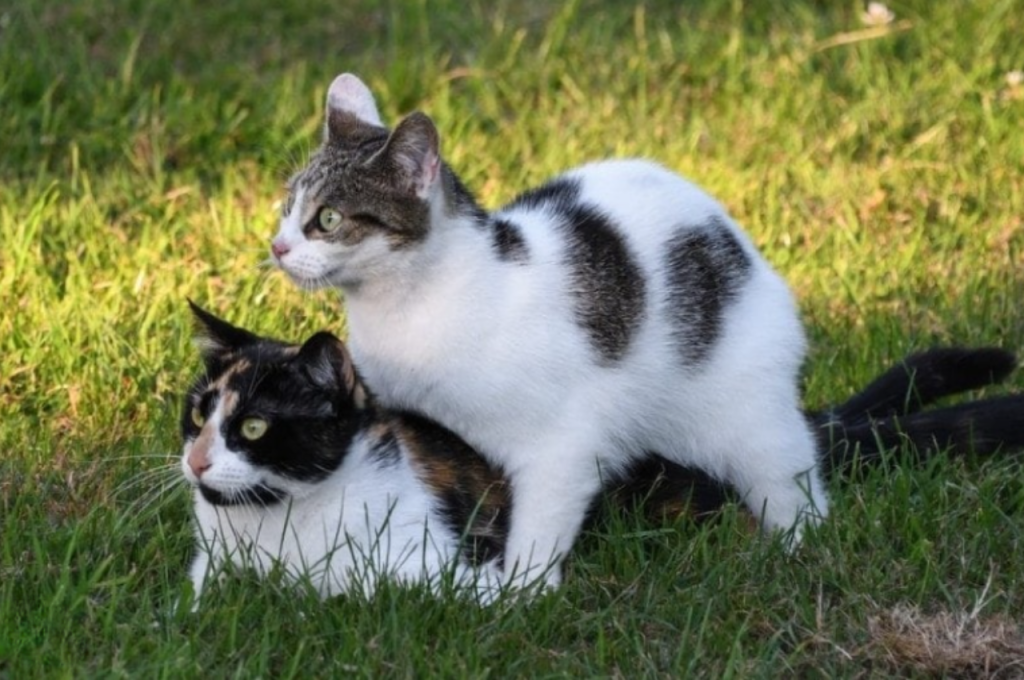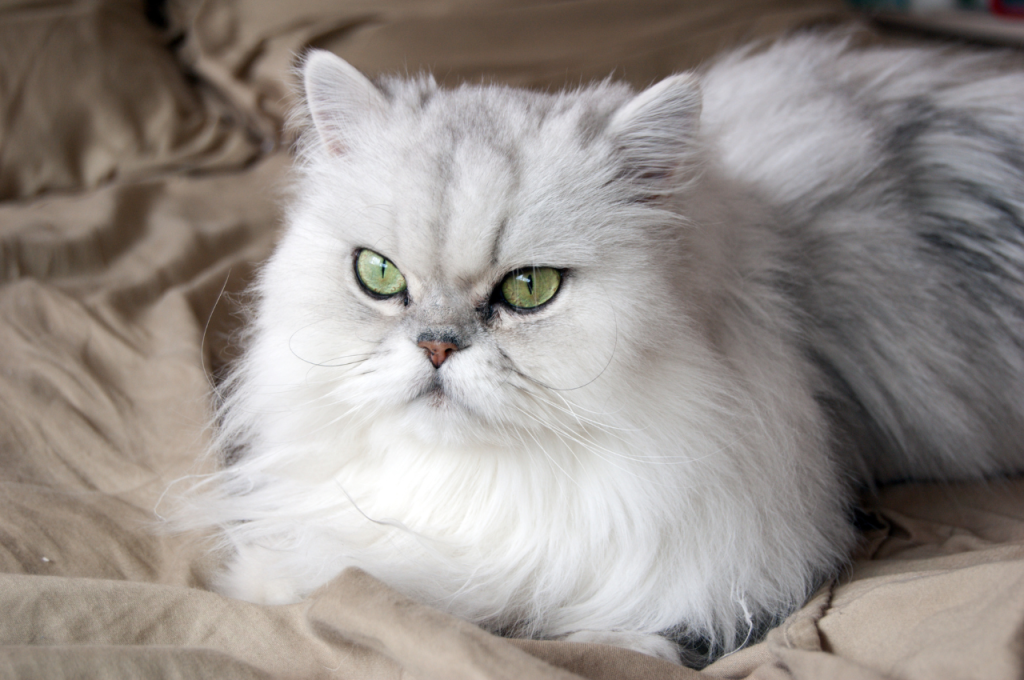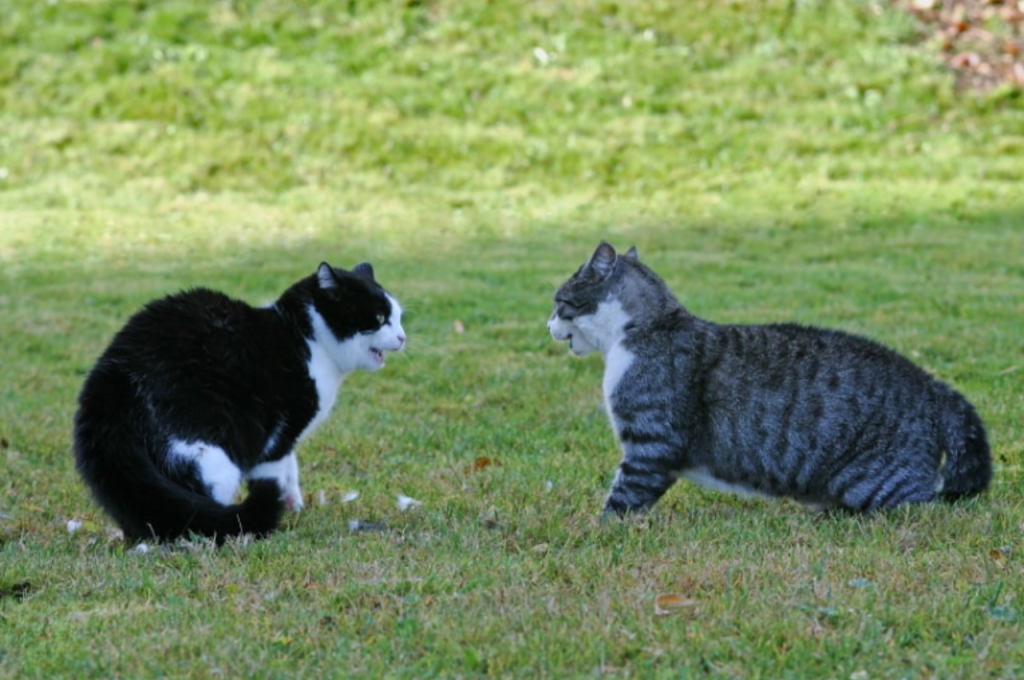To tell if a cat is in heat, look for increased vocalization and restlessness. Also, watch for frequent rubbing and rolling behaviors.
Identifying these signs can help determine if your cat is in heat. Cat owners often wonder how to recognize when their feline friend is in heat. Understanding the typical behaviors and physical changes that occur during this time can be helpful in managing your cat’s reproductive health.
We will explore the various signs that indicate a cat is in heat, as well as provide tips on how to best care for your pet during this period. By familiarizing yourself with these indicators, you can ensure your cat’s well-being and potentially prevent unwanted pregnancies. Let’s delve into the fascinating world of feline heat cycles and learn how to spot the telltale signs.
Recognizing Feline Estrus
Feline estrus, or heat, is marked by behavioral and physical changes in female cats. Signs include restlessness, vocalization, and increased affection. Additionally, cats may assume a mating position and attract male cats. Recognizing these signs can help cat owners manage their pet’s reproductive cycle.

Recognizing Feline Estrus is an important aspect of cat ownership. Cats in heat exhibit certain behavioral and vocalization changes that are important to identify in order to provide proper care and prevent unwanted litter.
Behavioral Changes
During estrus, cats may display a variety of behavioral changes. These changes are a result of the hormonal fluctuations that occur during the heat cycle. Some common changes to look out for include:
- Increased affection: Cats in heat may become more affectionate and seek out attention from their owners.
- Restlessness: Cats may become restless, pacing around the house and exhibiting signs of anxiety.
- Rolling and rubbing: Cats in heat may roll around on the floor and rub against objects in the home.
- Urinating more frequently: Cats may urinate more frequently during estrus as a way to mark their territory.
It is important to note that not all cats will exhibit all of these behaviors, and some may display different behaviors altogether. However, if you notice any significant changes in your cat’s behavior, it is important to consider the possibility that she may be in heat.
Vocalization Patterns
One of the most noticeable changes that occur during feline estrus is a change in vocalization patterns. Cats in heat will often become much more vocal, meowing and yowling loudly and frequently. This is a way for the cat to attract potential mates and is a natural part of the mating process. As a cat owner, it is important to be aware of these changes in vocalization patterns, especially if you live in a shared living space where your cat’s vocalizations may be disruptive to others. Additionally, if your cat is displaying increased vocalization patterns, it may be a sign that she is in distress and requires additional attention and care.
In conclusion, recognizing feline estrus is an important part of responsible cat ownership. By understanding the behavioral and vocalization changes that occur during estrus, cat owners can provide the proper care and attention that their cats need during this time.
Physical Symptoms of Heat
A cat in heat may exhibit physical symptoms such as restlessness, increased vocalization, and excessive grooming. Additionally, they may display more affectionate behavior and assume a mating position when petted. These signs can help you tell if your cat is in heat and in need of attention.
Restlessness and Affection
During a cat’s heat cycle, you may notice a significant change in their behavior. One of the most common signs is restlessness. A female cat in heat will often become more active and agitated, constantly moving around the house. She may also display increased affection towards her owner, seeking more attention and wanting to be petted or cuddled.
Restlessness and affection are both natural responses to the hormonal changes occurring in a cat’s body during heat. The cat’s desire for physical contact and attention is heightened, as she seeks to fulfill her reproductive instincts.
Posture Alterations
In addition to changes in behavior, a cat in heat may also exhibit alterations in her posture. These changes serve as visual cues to indicate that she is in the reproductive phase of her cycle. One common posture alteration is the “lordosis” position. This is when the female cat arches her back, raises her hindquarters, and lowers her head towards the ground. This posture is an invitation for mating, as it allows easier access to the reproductive organs.
Another noticeable posture alteration is the cat’s increased tail movement. A cat in heat may hold its tail up and to the side, and it may quiver or twitch more frequently than usual. These movements are believed to release pheromones, which attract male cats.
Understanding the physical symptoms of a cat in heat can help you recognize when your furry friend is going through this natural reproductive phase. By observing signs of restlessness, increased affection, and posture alterations such as the lordosis position and tail movement, you can provide the appropriate care and attention to your cat during this time.
The Heat Cycle Explained
Learn how to identify if your cat is in heat by observing behaviors like yowling, restlessness, and increased affection toward you. Cats in heat may also display physical signs such as a swollen belly and excessive grooming. Understanding these cues can help you care for your feline friend better.

If you have a female cat, it’s important to know the signs of heat so you can prevent unwanted litters. The heat cycle, also known as estrus, is the period when female cats are receptive to mating. During this time, cats can become very vocal, and agitated, and may try to escape in search of a mate. In this post, we’ll explain the heat cycle and how to tell if your cat is in heat.
Frequency of Heat Cycles
Cats are seasonal breeders, which means that they go through periods of fertility throughout the year. In general, female cats will go into heat every 2-3 weeks during the breeding season, which typically runs from early spring to early fall. However, some cats may go into heat more frequently, while others may have irregular heat cycles.
Duration of Each Cycle
The heat cycle usually lasts around 7-10 days, although it can be shorter or longer in some cats. During this time, female cats will display a variety of behaviors and physical changes, including:
- Increased vocalization
- Restlessness and agitation
- Rolling on the ground
- Raising the hindquarters and treading with the back legs
- Excessive grooming of the genital area
- Swelling of the vulva
If you suspect that your cat is in heat, it’s important to keep her indoors to prevent unwanted litter. You can also talk to your vet about spaying your cat, which will prevent her from going into heat and reduce her risk of certain health problems. Understanding the heat cycle in cats is important for any cat owner. By knowing the signs of heat and taking steps to prevent unwanted litters, you can ensure that your cat stays healthy and happy.
Vocal Clues to Detect Heat
When a cat is in heat, they exhibit various vocal cues to communicate their readiness to mate. Understanding these distinctive sounds can help you identify if your feline friend is in heat.
Increased Meowing
- Cats in heat tend to meow more frequently than usual.
- This persistent meowing is a signal of their fertility.
- It’s their way of attracting potential mates.
The Call of Mating
- The call of mating is a distinctive yowling sound.
- Female cats produce this sound to attract male cats.
- It is a clear indication that your cat is at the peak of her heat cycle.
Changes in Appetite
Changes in appetite are a common indicator of a cat being in heat. During this time, a cat’s appetite may fluctuate, leading to either increased or decreased food consumption. Understanding these changes can help cat owners recognize and address their pet’s needs during this challenging period.
Loss of Appetite
A loss of appetite is a potential sign that a cat is in heat. Some cats may display disinterest in their regular meals, leading to reduced food consumption. This can be concerning for pet owners, especially if their cat typically has a hearty appetite. Monitoring food intake and offering enticing, high-quality meals can help address this issue.
Behavioral Signs Related to Feeding
Behavioral changes related to feeding can also indicate a cat’s heat cycle. Some cats may become more vocal or demanding when it comes to mealtime, while others may exhibit anxiety or irritability around food. Additionally, heightened territorial behavior during feeding times can be observed, with cats becoming more protective of their food or space.
The Role of Scent Marking
Cats in heat use scent markings to communicate their reproductive status to other cats. This includes rubbing their faces and bodies on objects, as well as urine spraying. Paying attention to these behaviors can help you determine if your cat is in heat.
Urine Spraying
Female cats in heat may engage in urine spraying as a way to attract male cats. This behavior involves the cat backing up to a vertical surface, twitching its tail, and spraying a small amount of urine. The urine contains pheromones that signal the cat’s reproductive status to potential mates. This behavior can be a source of frustration for cat owners, as the strong odor can be difficult to remove from surfaces.
Scent-marking Behaviors
During heat, female cats exhibit scent-marking behaviors to advertise their availability to potential mates. These behaviors include rubbing their face and body against objects in the environment, as well as vocalizing to attract male cats. Additionally, female cats may become more affectionate and seek attention from their owners. Understanding these scent-marking behaviors can help cat owners identify when their pet is in heat and take appropriate measures to manage their behavior.
Interactions with Other Cats
Interactions with other cats can provide valuable clues about whether a cat is in heat. During this period, a female cat’s behavior towards other cats may undergo noticeable changes. It’s essential for cat owners to understand these changes to ensure the well-being of their pets and the harmony within the household.
Aggression or Affection
During heat, a female cat may exhibit heightened levels of aggression or affection towards other cats. Some cats become irritable and aggressive, displaying territorial behavior as they attempt to establish their dominance. On the other hand, others may seek extra comfort and attention, displaying heightened levels of affection towards both humans and other cats.

Social Dynamics During Heat
The social dynamics among cats within the household may undergo noticeable changes during a cat’s heat cycle. Established hierarchies may be challenged as cats vie for dominance, leading to tensions and conflicts. Conversely, some cats may become more submissive, seeking to avoid confrontations and seeking comfort from other members of the household.
Conclusion
Understanding the signs of a cat in heat is crucial for cat owners. By observing behavioral changes such as increased vocalization, restlessness, and attention-seeking behavior, one can determine if their cat is going through heat. It is important to provide proper care and attention during this time, and considering spaying or neutering can help prevent unwanted pregnancies.
